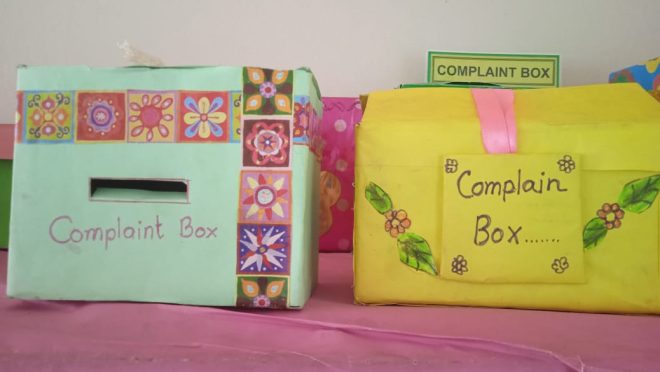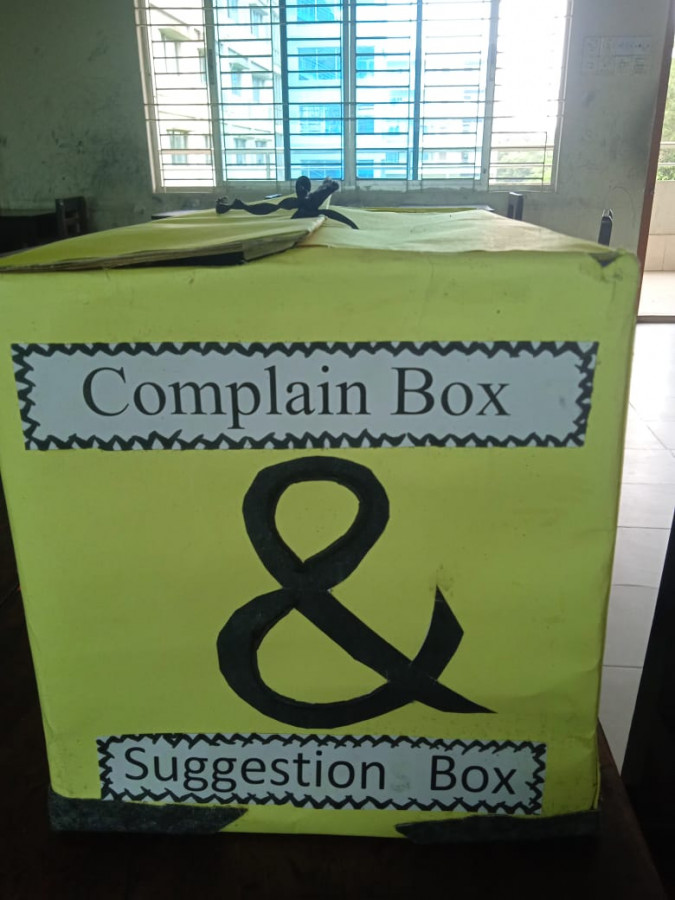Fostering emotional intelligence and classroom harmony: The power of a complaint box
The presence of a complaint box encourages students to voice their concerns in a constructive manner. By providing a designated outlet, unnecessary gossip or negative discussions are minimised, fostering a more positive classroom environment
Fostering emotional intelligence and classroom harmony: The power of a complaint box
The presence of a complaint box encourages students to voice their concerns in a constructive manner. By providing a designated outlet, unnecessary gossip or negative discussions are minimised, fostering a more positive classroom environment

Institutions often neglect character building in students, affecting their emotional intelligence and behaviour. Complaints – a common phenomenon faced by teachers and students – impacts the learning atmosphere. The complaint box can be a potent solution to alleviate many issues that arise from complaints, and foster a positive classroom environment.
The challenge of complaints
Teachers, especially those dealing with junior students, frequently encounter complaint-related issues. These grievances can have a profound impact on the teaching-learning environment, particularly in terms of social behaviour.
Dismissing or excessively addressing complaints can be detrimental to a positive classroom atmosphere. When teachers allocate a substantial amount of time to handling complaints, it cuts into valuable teaching hours. Conversely, ignoring complaints can compromise the safety and well-being of students.
Finding a balance
Navigating this delicate balance requires careful consideration. Drawing from nine years of teaching experience and research into various socio-psychological issues, the complaint box appears to me a very attractive solution. The concept is simple: introduce a complaint box in the classroom and encourage students to express their concerns in writing and drop them into the box. This approach yields several significant benefits:
Cultivating a complaint-free environment
The presence of a complaint box encourages students to voice their concerns in a constructive manner. By providing a designated outlet, unnecessary gossip or negative discussions are minimised, fostering a more positive classroom environment.
Curbing dissemination of abusive behaviour
Students often emulate negative behaviours they witness. The complaint box reduces the spread of abusive language or behaviours, creating a safer and respectful space for everyone.
Enhancing writing skills
Expressing complaints in writing sharpens students’ communication skills. They learn to articulate their concerns clearly and effectively, contributing to their overall language development.
Optimising teaching time
Teachers can utilise their teaching hours more efficiently. With a structured approach to addressing complaints, educators can devote more time to imparting knowledge and facilitating engaging lessons.
Teaching responsible expression
The complaint box teaches students how to voice concerns while respecting privacy. It instills the understanding that complaints should be made responsibly and without causing unnecessary harm.
Cultivating tolerance and patience
The complaint box cultivates a culture of tolerance and patience. Both students and teachers learn to exercise patience in addressing concerns and resolving conflicts.
Promoting accountability
Knowing that their words and behaviours might be recorded in a complaint, individuals become more accountable for their actions, deterring them from engaging in disruptive behaviour.

Striking a balance
Embracing the complaint box strategy strikes a balance between addressing complaints and maintaining a focused learning environment. By adopting this approach, institutions empower students to communicate effectively, uphold privacy, and manage their emotions.
The complaint box becomes a tool that not only curbs negativity but also nurtures a sense of responsibility, patience, and accountability among all stakeholders. Ultimately, it paves the way for a harmonious and productive educational journey.
Educational Science theories supporting the Complaint Box
Several educational science theories support the idea that the installation of a complaint box in a classroom can foster emotional intelligence and classroom harmony. Some of these theories include:
The Social Learning Theory proposed by Albert Bandura
This theory emphasises that individuals learn by observing and imitating others. By introducing a complaint box, students observe responsible communication and conflict resolution, which enhances their emotional intelligence and promotes harmonious interactions.
Constructivist Theory based on the work of Jean Piaget and Lev Vygotsky
This theory highlights the importance of active learning and building knowledge through experience. A complaint box encourages students to actively engage in expressing concerns and navigating conflicts, contributing to their emotional growth and relationship-building skills.
Self-Determination Theory developed by Edward Deci and Richard Ryan
This theory focuses on intrinsic motivation and psychological needs for autonomy, competence, and relatedness. The complaint box empowers students to express themselves autonomously, enhancing their emotional awareness and contributing to a sense of classroom community.
Emotional Intelligence Theory by Daniel Goleman
This theory emphasises the significance of recognising and managing one’s own emotions and those of others. A complaint box offers a platform for students to process their emotions, practice empathy, and develop emotional self-regulation skills.

Social and Emotional Learning (SEL)Theory
This theory advocates for teaching emotional intelligence and interpersonal skills in schools. A Complaint Box Approach aligns with SEL principles by providing a structured approach for students to communicate their feelings, resolve conflicts, and collaborate effectively.
Positive Psychology Theory by Martin Seligman
This theory focuses on strengths, virtues, and factors that contribute to a fulfilling life. Introducing a complaint box encourages positive communication and problem-solving, contributing to a positive classroom environment and students’ emotional well-being.
Cognitive-Behavioral Theory
This theory, often used in counselling and therapy, highlights the connection between thoughts, emotions, and behaviours. A complaint box allows students to express their thoughts and emotions constructively, promoting emotional awareness and healthy expression.
Incorporating a complaint box in the classroom aligns with these educational science theories, as it facilitates experiential learning, emotional self-awareness, effective communication, and conflict resolution skills. This approach contributes to the development of students’ emotional intelligence and overall classroom harmony.
The author is a teacher at Morning Glory School and College, Savar Cantonment


